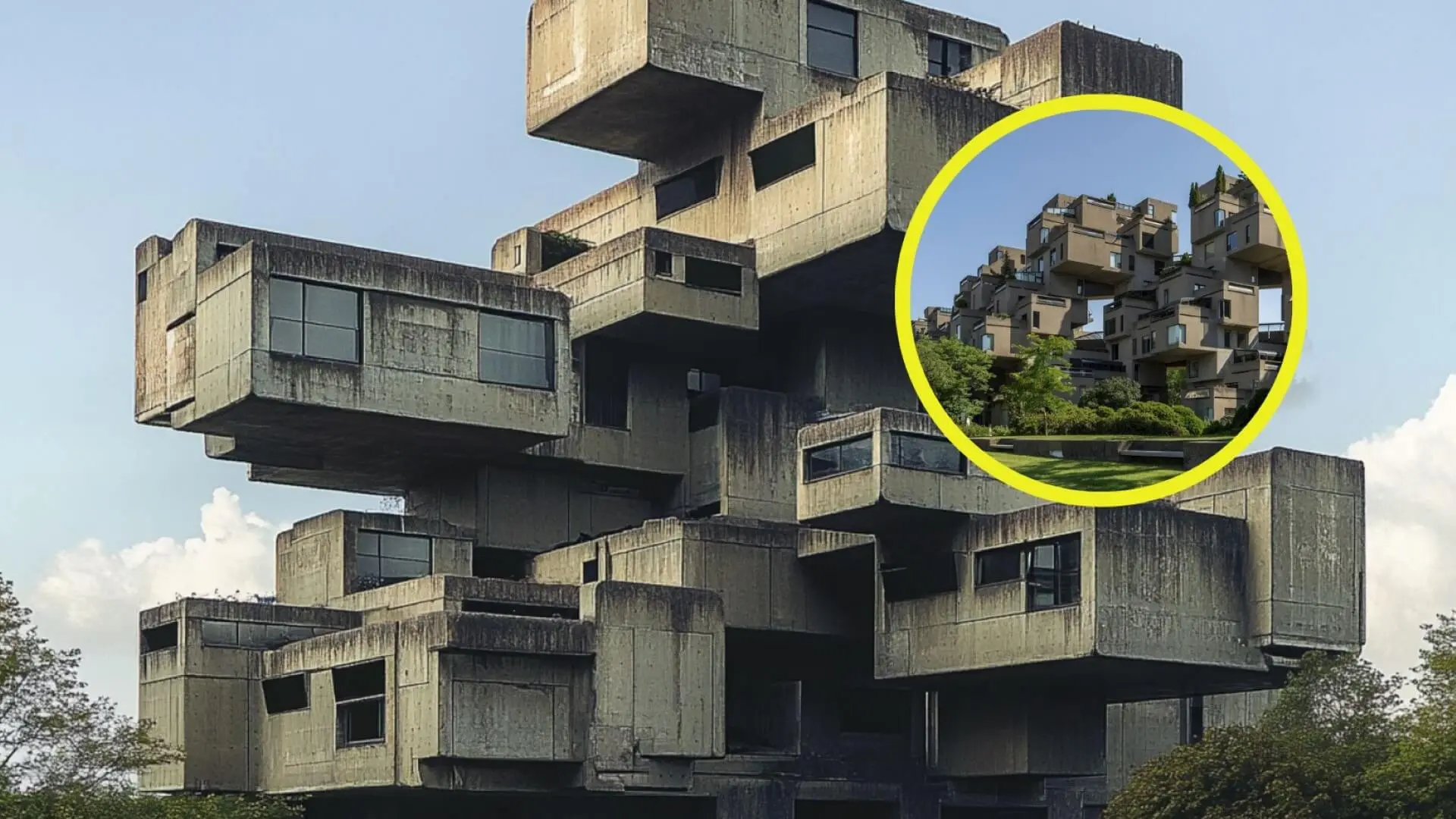Functional, solid and unadorned: with its exposed concrete architecture, brutalism has become an iconic style of the 20th century.
Brutalism is an architectural style that emerged in the mid-20th century. Characterized by its focus on functionality and material honesty, it makes predominant use of exposed concrete and solid-looking designs. Thanks to the 2024 film “The Brutalist”, directed by Brady Corbet, brutalist architecture has once again aroused interest.
What is brutalism?
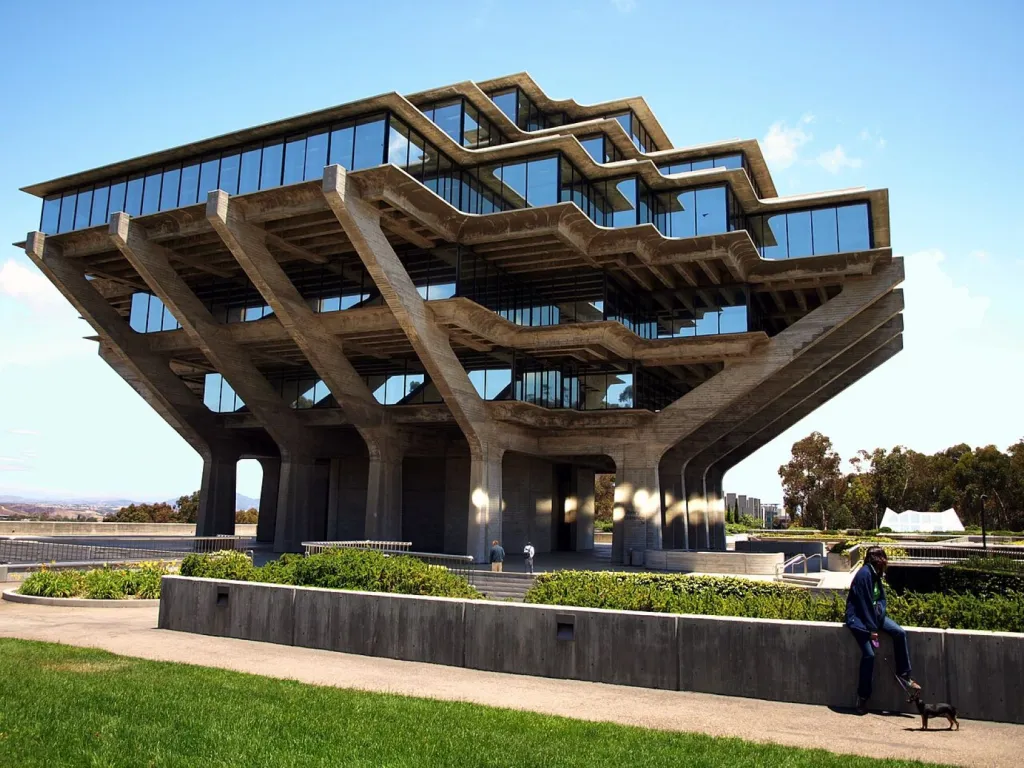
Material and design sincerity
Brutalism is an architectural movement distinguished by its focus on material and structural honesty. In its beginnings, it sought to reflect an aesthetic of functionality and simplicity. In fact, it emerged as a reaction against more ornate architectural styles.
Although it is often associated with the use of exposed concrete, brutalism also employs other industrial materials. These materials are directly and visibly integrated into the structure and services of the building.
Brutalism: the origin of its name
The term “brutalism” derives from the French “béton brut”, which means “raw concrete”. It was popularized by the Swiss architect Le Corbusier.
A post-war trend
Chronologically speaking, Brutalism gained prominence in the decades following the Second World War. The need to quickly rebuild devastated cities, as well as the search for economical and functional architectural solutions,allowed this architectural trend to flourish.
Although it had a significant presence in Europe, especially in the United Kingdom and France, brutalism also made inroads in North America, Asia and Latin America. Its ability to adapt to diverse cultural and climatic contexts earned it a remarkable popularity. In fact, there are even notable examples of this trend in Spain,.
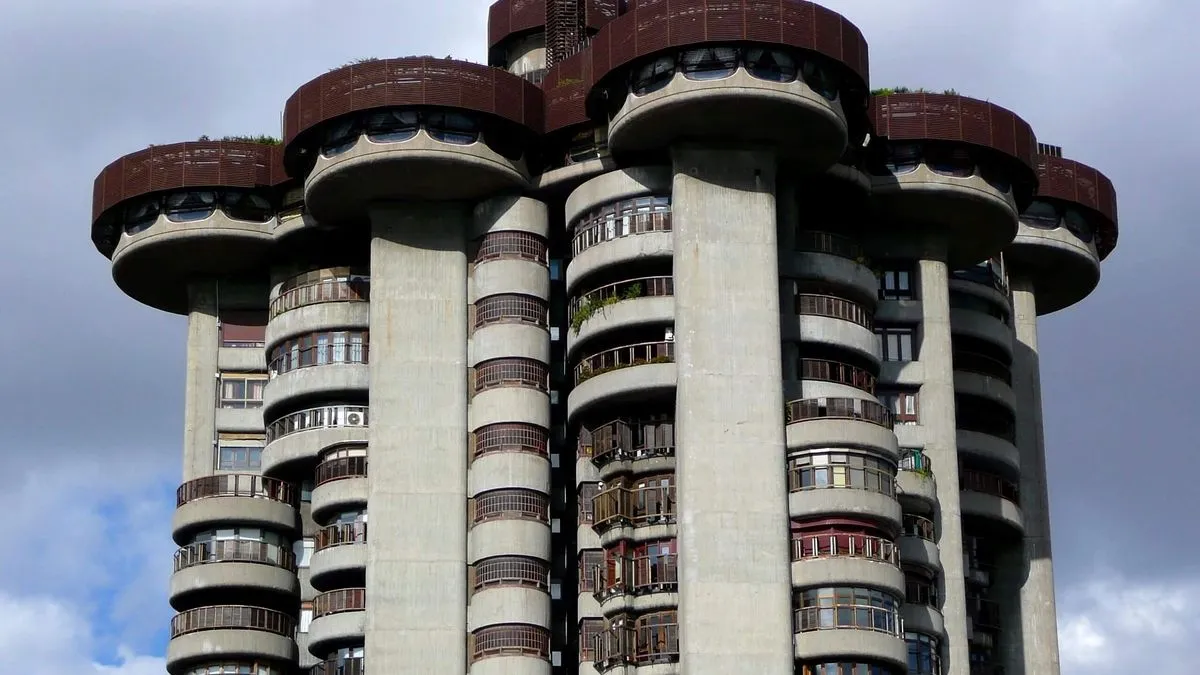
Main characteristics of brutalism
Materials
Brutalism is associated with the extensive use of raw concrete. Often, it even shows the textures of the wooden centering used in the formwork. Brick, steel and glass are also used in a functional and unadorned way.
The design
Another representative feature is the predominance of bold and repetitive geometric shapes. Brutalism opts for architectural models with a monolithic and monumental appearance. The structures are usually solid, with pronounced overhangs and a clear interest in showing the internal functionality of the building.
The architectural objectives
Brutalist constructions seek structural and material honesty. For this reason, all superfluous ornamentation that has no function beyond the decorative is eliminated. The aim is an aesthetic that reflects the function of the building and the construction elements, in such a way as to promote a direct connection between form and function.
Phases of brutalism
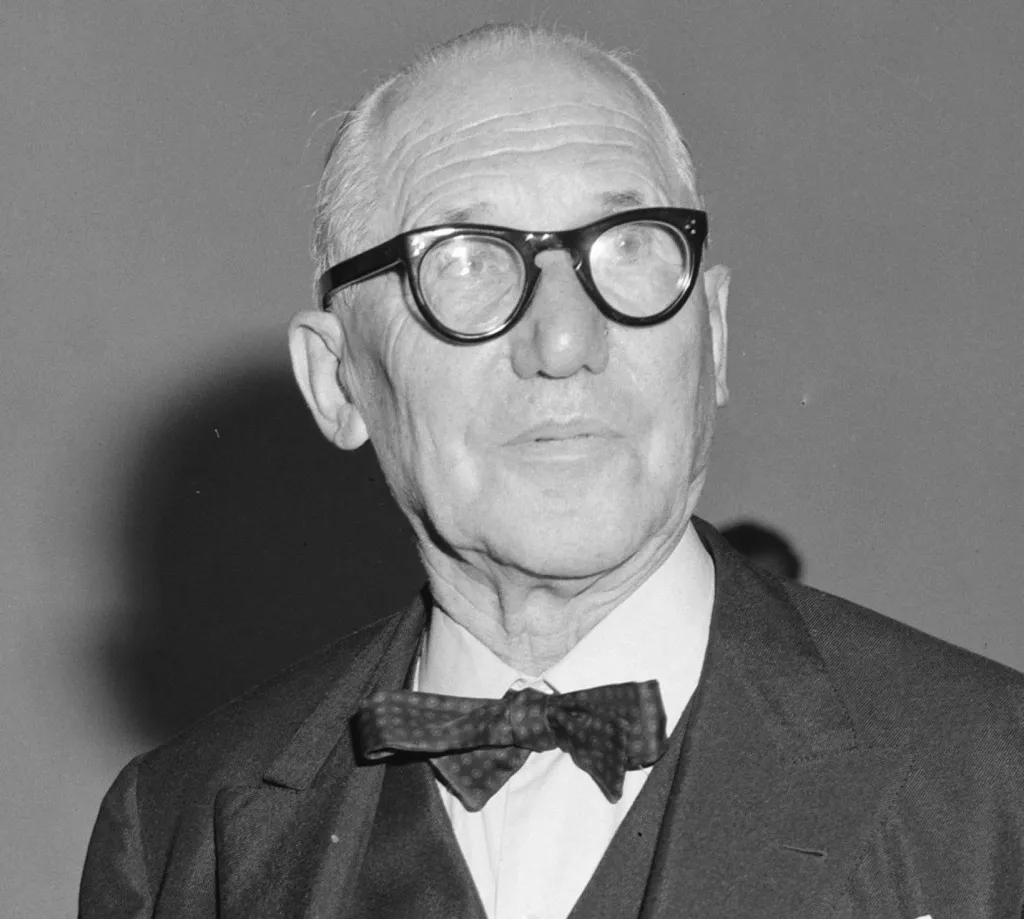
Early brutalism (1950s)
Influenced by Le Corbusier and his Unité d’Habitation in Marseille (1952), this phase is characterized by experimentation with raw concrete and the search for functional housing solutions.
Mature Brutalism (1960s)
More ambitious and solid projects were developed at this stage. An example is the Barbican Estate in London, which incorporates greater complexity in the design and an integration of public and private spaces.
Decline and criticism (from the 1970s onwards)
As Brutalism became associated with public housing projects and the construction of government buildings, criticism grew over its austere appearance and, in some cases, the maintenance problems it entailed. This not only led to a decline in its popularity, but also led to the demolition or remodeling of some iconic structures.
Brutalism in the USSR
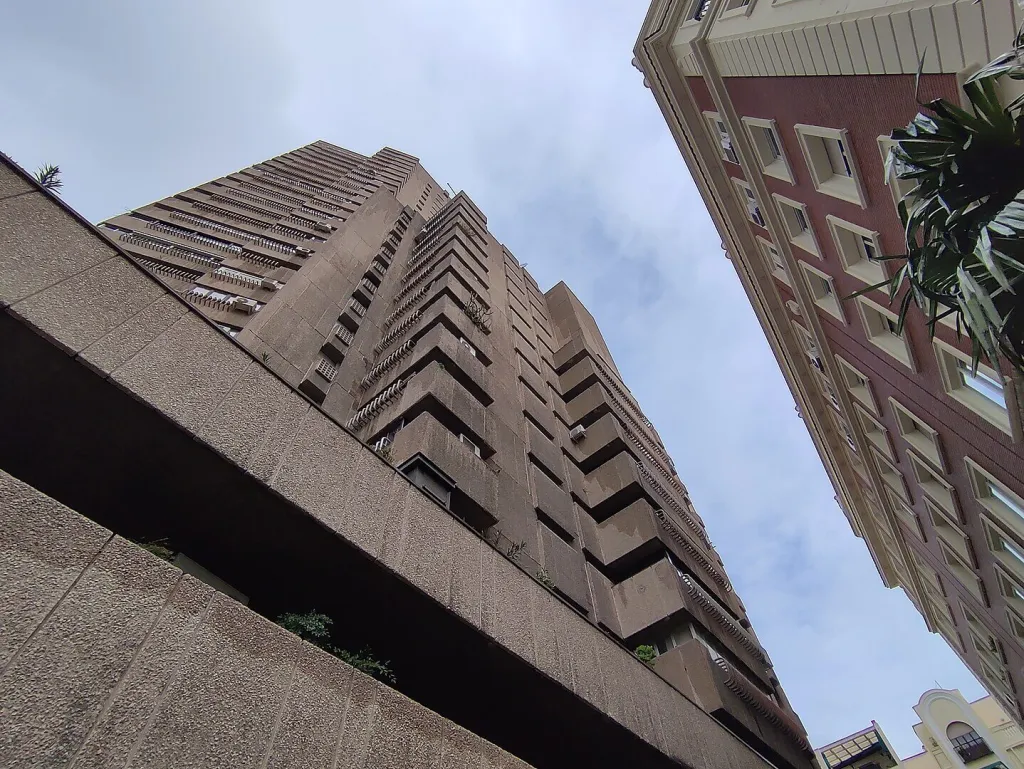
An architecture associated with the communist political project
In the Soviet Union, brutalism developed in parallel with international trends, but with distinctive characteristics that reflected the country’s political and social context. Soviet brutalist architecture is characterized by its colossalism and its focus on functionality. In this case, exposed concrete remains the main building material.
Unlike Brutalism in Western Europe and North America, where the movement had a theoretical basis of structural honesty and functionalism, in the USSR it became a vehicle for expressing the total power of the state and socialistmodernization. Many Soviet Brutalist buildings were used to house government infrastructure, universities, housing estates and cultural centers.
Housing estates
One of the key factors of Soviet brutalism was its application in the construction of mass housing. During the second half of the 20th century, the Soviet government implemented large-scale social housing projects known as mikrorayonsor microdistricts.
These housing developments consisted of large prefabricated apartment blocks, designed quickly and efficiently to house thousands of citizens. Although not all mikrorayon” were purely brutalist, they shared the aesthetic of functionality and the massive use of concrete.
Fall of brutalism
Brutalism in the USSR had its heyday in the 1960s and 1970s, but with the collapse of the Soviet bloc in the 1990s, many of these structures were abandoned, demolished or remodeled. However, some brutalist buildings have been restored and protected as part of the recent architectural heritage.
Criticism and legacy of brutalism
An oppressive style
Despite its impact on 20th-century architecture, Brutalism has been criticized from the outset. Many consider Brutalist buildings to be cold, monotonous and unwelcoming. The solid appearance and the use of raw concrete contributed to the perception that this style was oppressive, especially in the case of large public housing projects.
Concrete decay
Another common problem with this style is the deterioration of the concrete over time. Without proper maintenance, brutalist structures tend to wear out and develop stains and cracks. In cities such as London, Boston and Berlin, some of the most iconic buildings have been demolished or remodeled to make them more aesthetically acceptable.
Inspiration for the present
However, brutalism also has passionate advocates. In recent years, there has been a resurgence of interest in this style, with initiatives to preserve and restore brutalist buildings. Some consider brutalism to represent an honest and bold form of architecture, rejecting superficiality in favor of functionality and structural expression.
Furthermore, contemporary architecture has taken inspiration from brutalism to design buildings that incorporate its essential principles, but with modern materials and advanced technologies. In cities such as Tokyo and São Paulo, the brutalist aesthetic has influenced new architectural projects that combine exposed concrete with glass, steel and sustainable elements.

